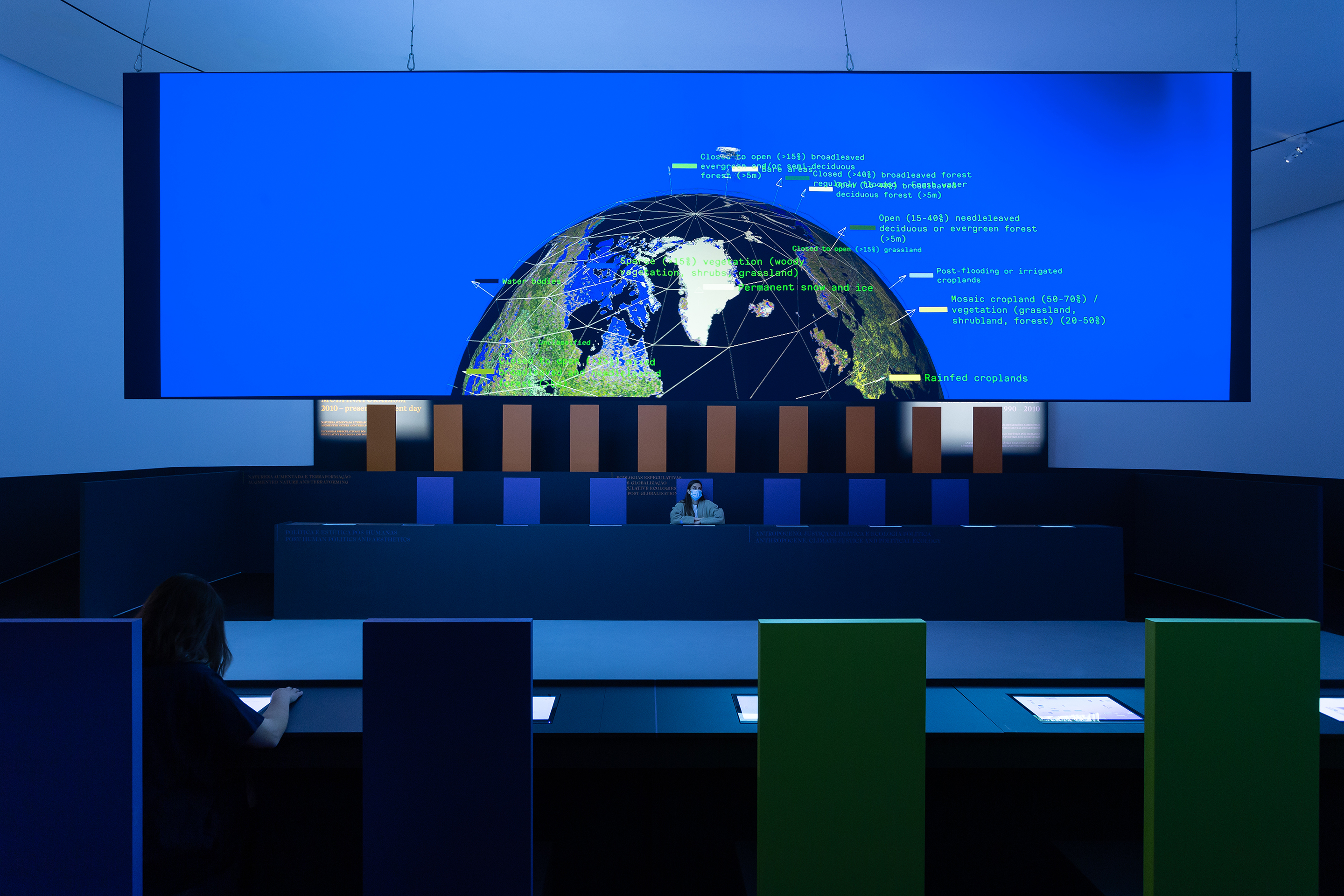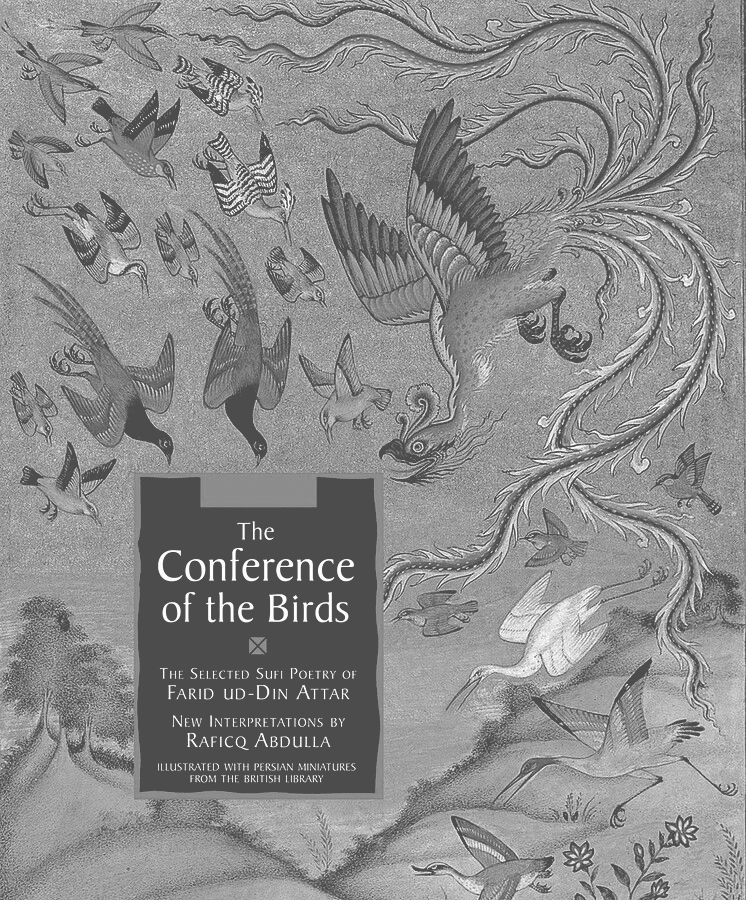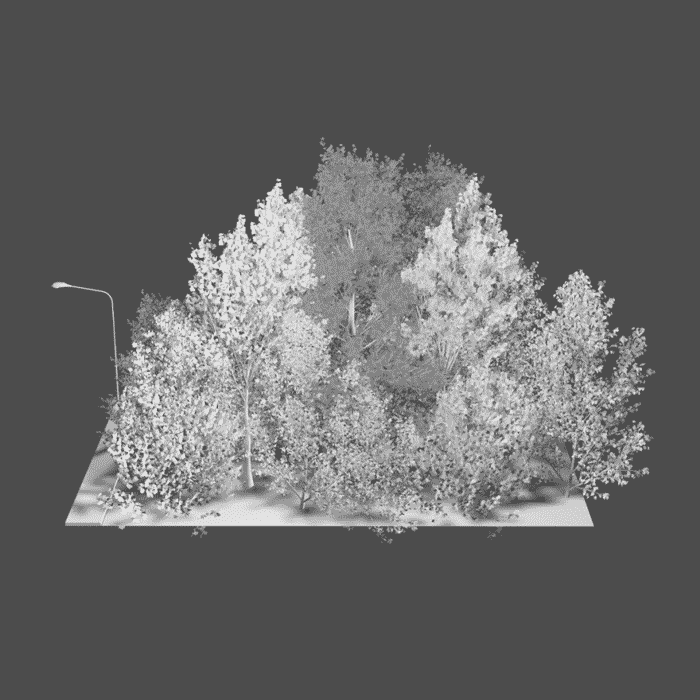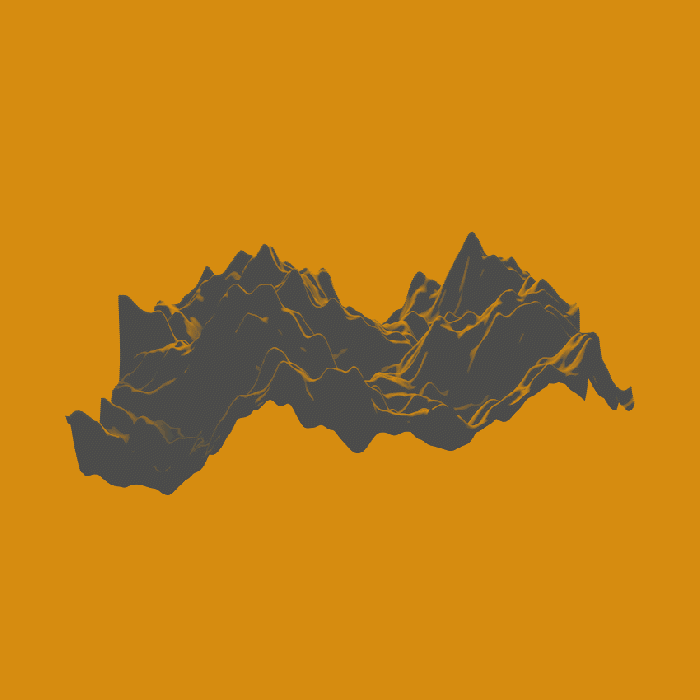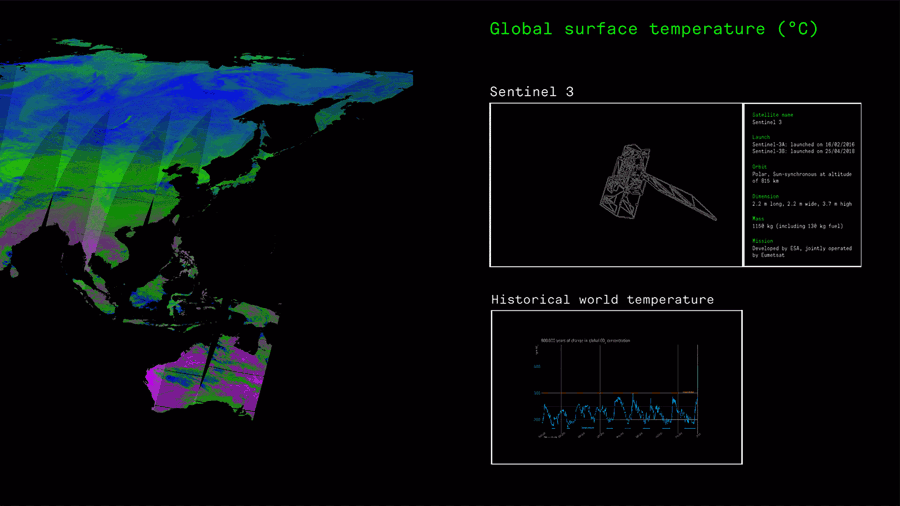Words by Carla Juaçaba, the architect behind the installation design of Visual Natures: The Politics and Culture of Environmentalism in the 20th and 21st Centuries
“Step gently on the ground” is a phrase by the Brazilian Indigenous leader and writer Ailton Krenac. It is open to various interpretations depending on the discipline. In architecture, we can understand it to mean that our first act when building should be to transform the ground. The architectural work should be understood as an attempt to act upon an area of land, an action over a territory. Architectural design is not a drawing or a visual composition. Rather, each line, idea or sketch represents an action, a material and a geographical transformation.
To pay more conscious attention to our actions, we (architects) should work with geographers and environmental engineers to build a manufactured landscape where nature, design and infrastructure coexist.
Installation views of "Visual Natures: The Politics and Culture of Environmentalism in the 20th and 21st Centuries". Photos: Bruno Lopes. Courtesy of EDP Foundation / maat.
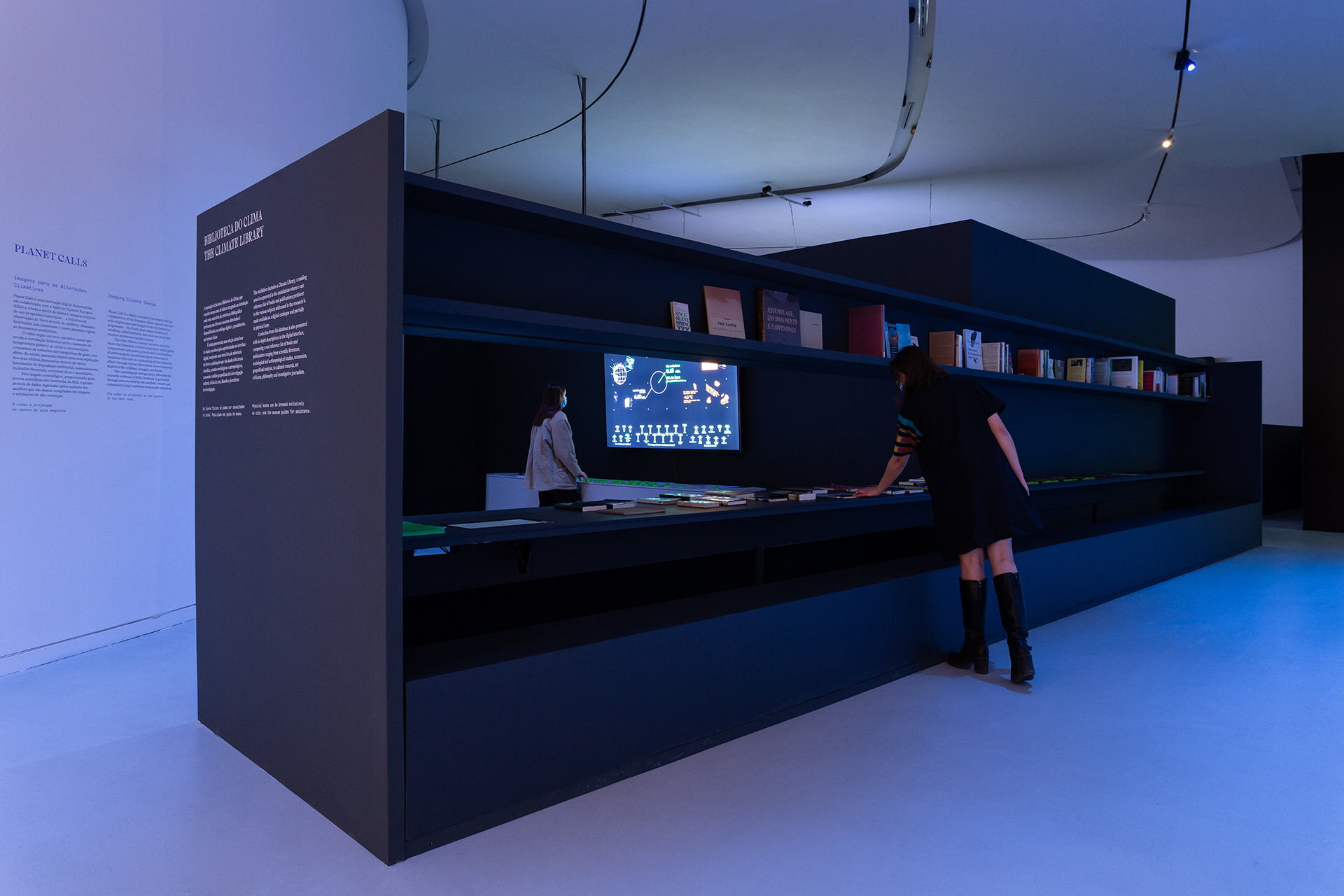
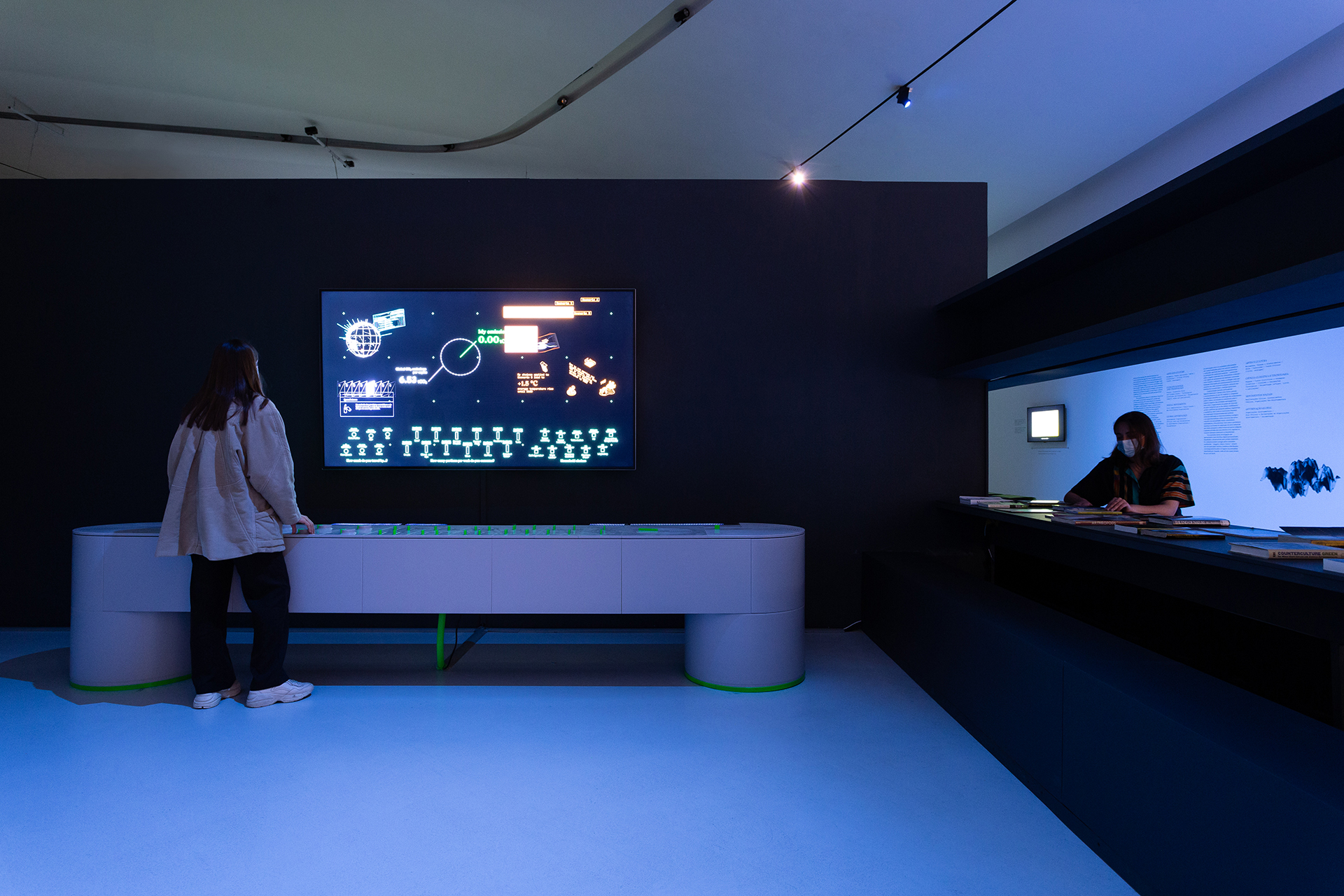

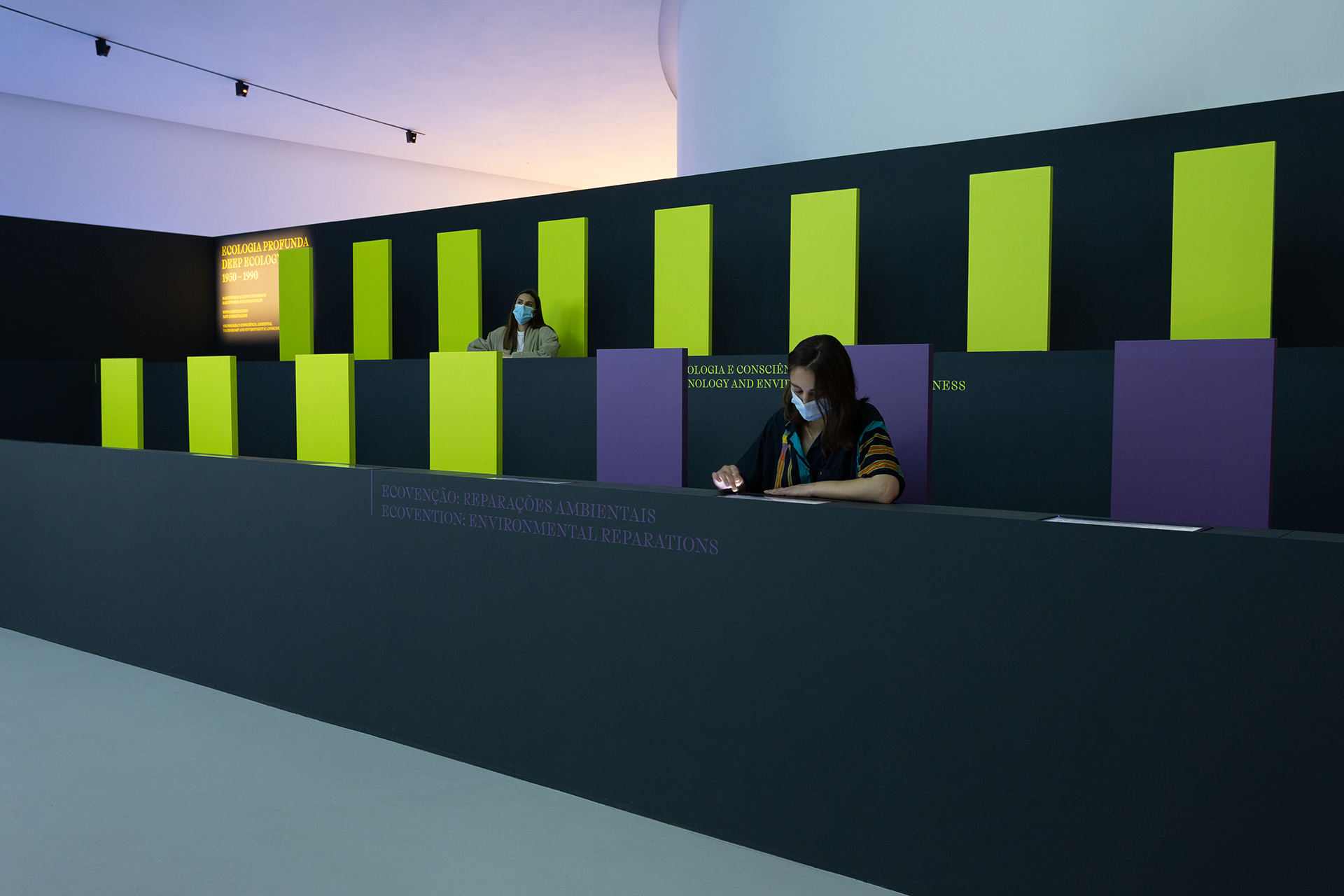
The Visual Natures installation is based on The Conference of the Birds by the Iranian Sufi mystic and poet Attar of Nishapur, an allegorical poem about our human physical and spiritual struggle. The exhibition is designed as a conference space in which visitors and participants represent birds discussing a reordering of the relationship between man and nature, science and democracy, and the idea of progress.
This space is political, since these conversations are about coexistence on our planet, about finding “the right way to compose a common world, the kind of world the Greeks called a cosmos” (Bruno Latour, Politics of Nature: How to Bring the Sciences into Democracy, 1999: 9).
The conference space is crucial for understanding and defining a new political ecology: “In Ecuador, nature is recognised as having rights in the new constitution. A new social contract has been established in which non-human life forms are featured as well as many other ‘citizens’ within a broader, non-anthropocentric political space” (Paulo Tavares, 8 Reações para o Depois, 2019).
I see architecture as an action, as the transformation of the landscape and, especially, of an area of land. Therefore, it is never an invisible action. The question is to realise that to construct is not to destroy but rather to coexist.
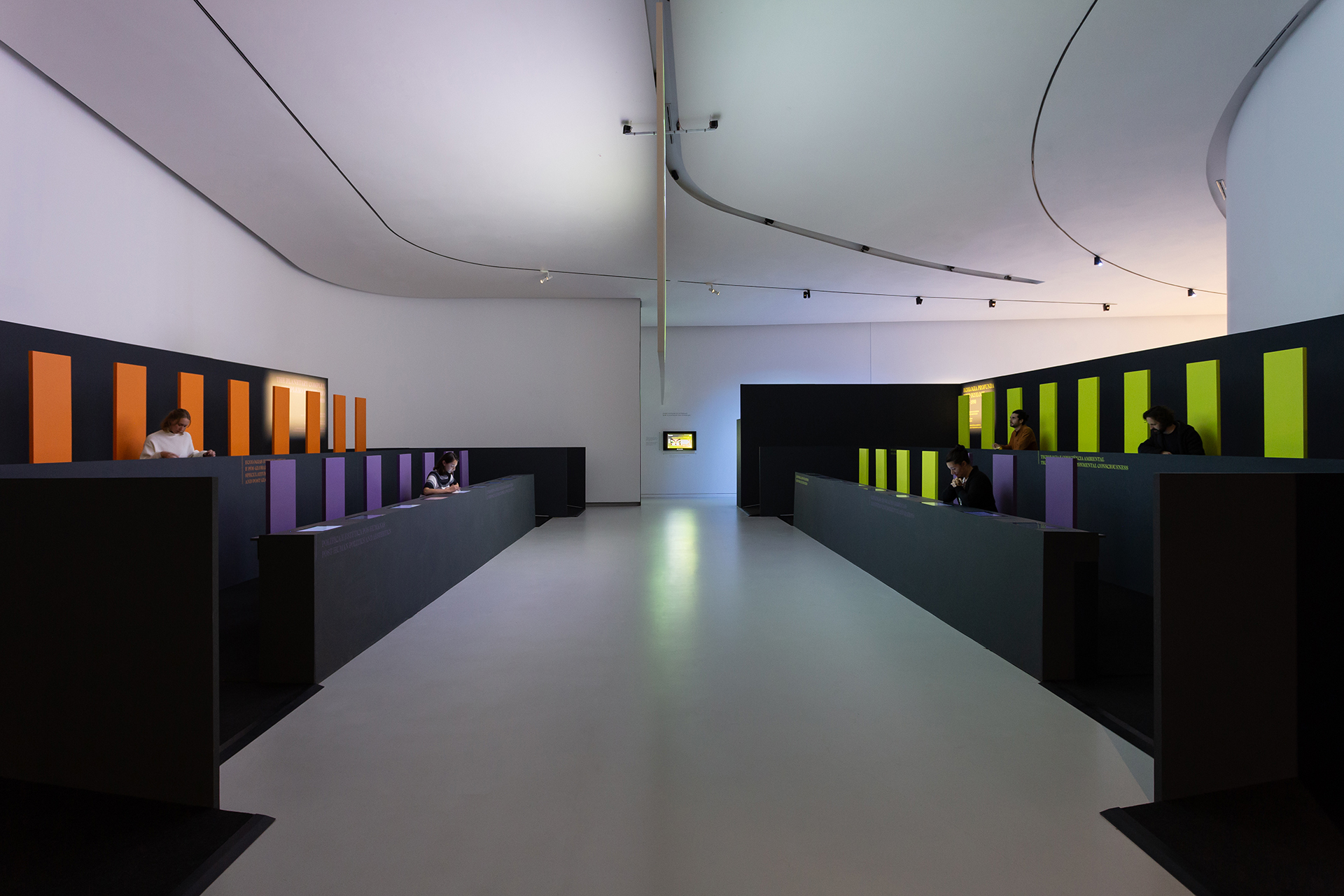
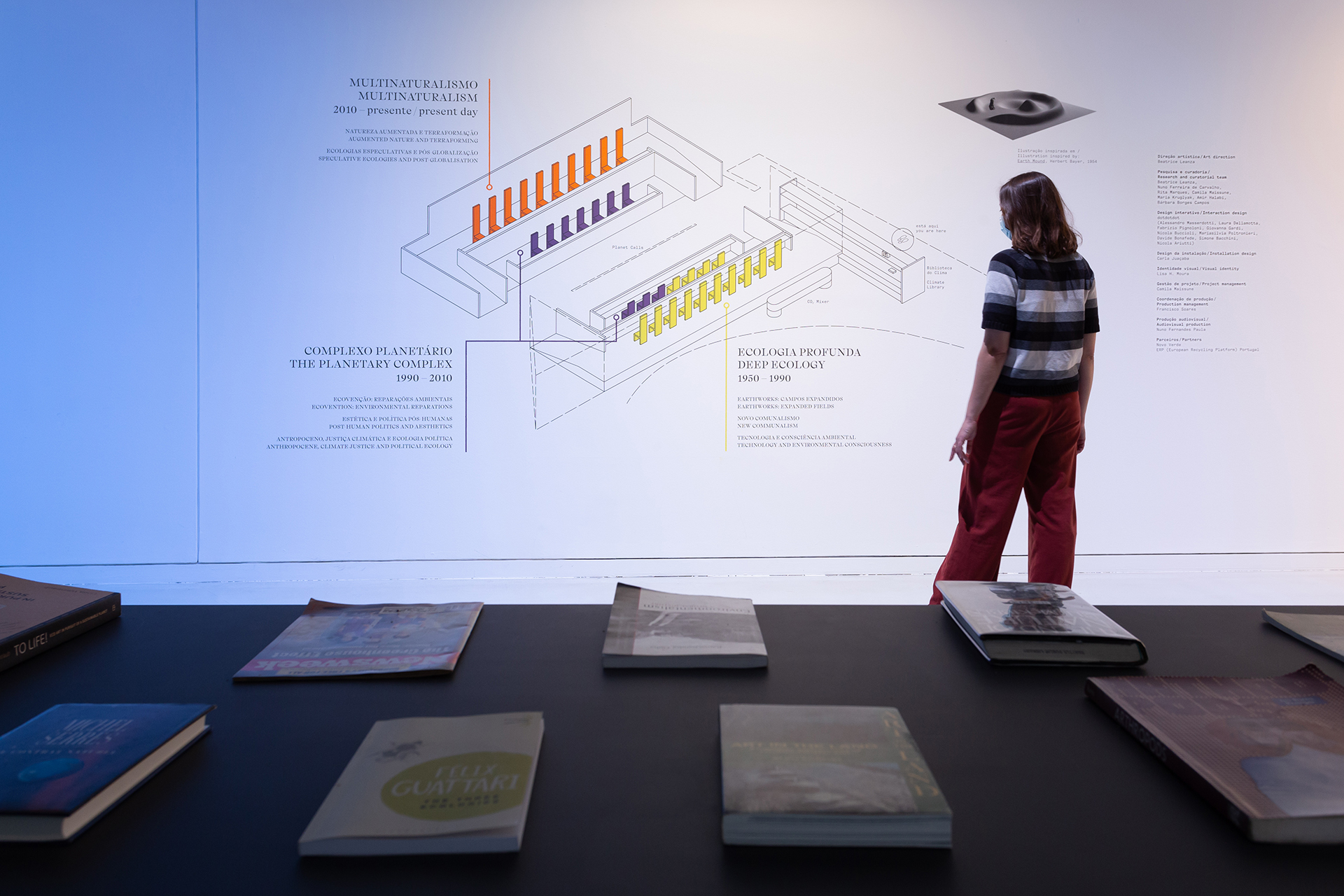
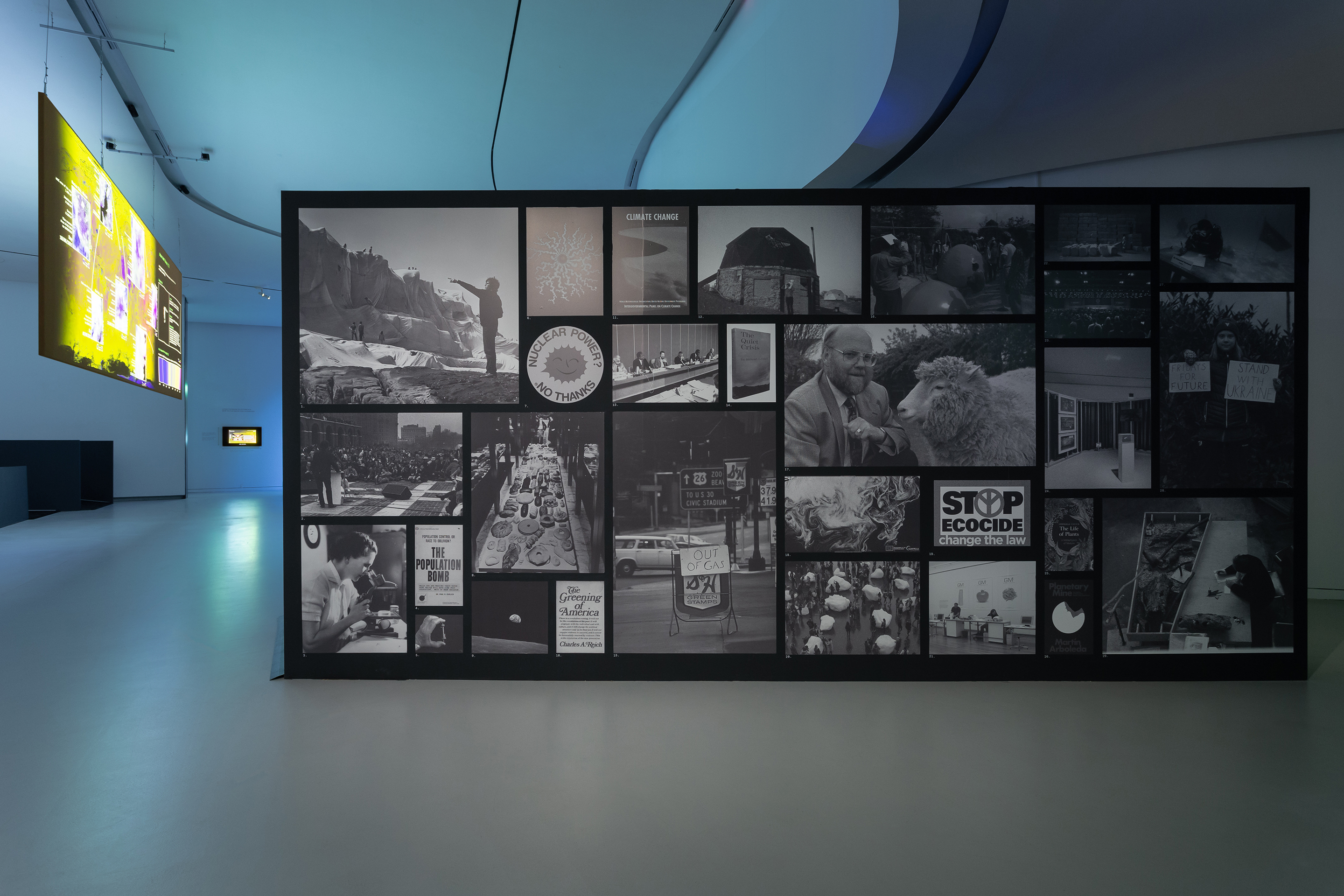
Carla Juaçaba and Bia Lessa, Pavilion Humanidade, 2012. Photos: Celso Brando. Courtesy: Carla Juaçaba.


For example, the Pavilion Humanidade 2012 for Rio+20 (UN Conference on Sustainable Development), designed in partnership with the theatre director Bia Lessa, arose out of observing a place – Copacabana – where events are held and scaffolding is going up for a show or sports event, etc. at any time of the year. The idea was to build a 9,000-square-metre pavilion made of recycled materials, which came from one place and would be used in another place afterwards.
I regard this as an action, the action of observing what you have around you and building with what you have available and with what you can, wasting as little energy as possible. That is sustainability.
The pavilion, built entirely of scaffolding, is supported by the rock at 7,000 different individual points. No foundations were necessary, so the soil was left intact. The landscape can be seen through the structure, and the sun and rain penetrate it, reminding humankind of its fragile condition with regard to nature. “The pavilion doesn’t produce an image of the future but instead proves what is materially and ecologically possible in the present.”
Another example is the Vatican Chapel for the Holy See Pavilion for Venice Biennale 2018, where I was one of ten architects invited by the curator Francesco Dal Co to build ten chapels gathered in the densely wooded area at the end of the island of San Giorgio Maggiore in Venice, never open to the public before.
The Vatican Chapel comprises a standing cross and a lying and almost invisible cross immersed in the existing nature. The dome is the top of the trees. The project is the synthesis of a far older purpose: to sit on a bench in the chapel and observe the cross which represents suffering. It is therefore neither sculpture nor installation but architecture.
Carla Juaçaba, "Vatican Chapel", 2018. Photos: Federico Cairoli. Courtesy: Carla Juaçaba.
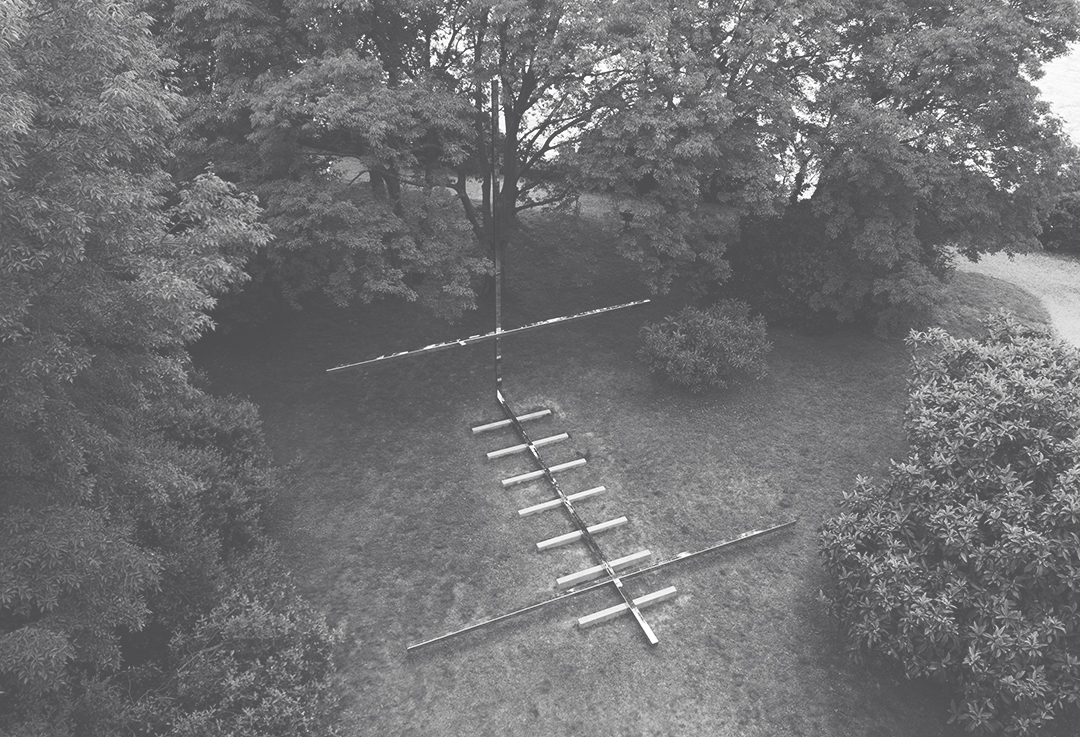
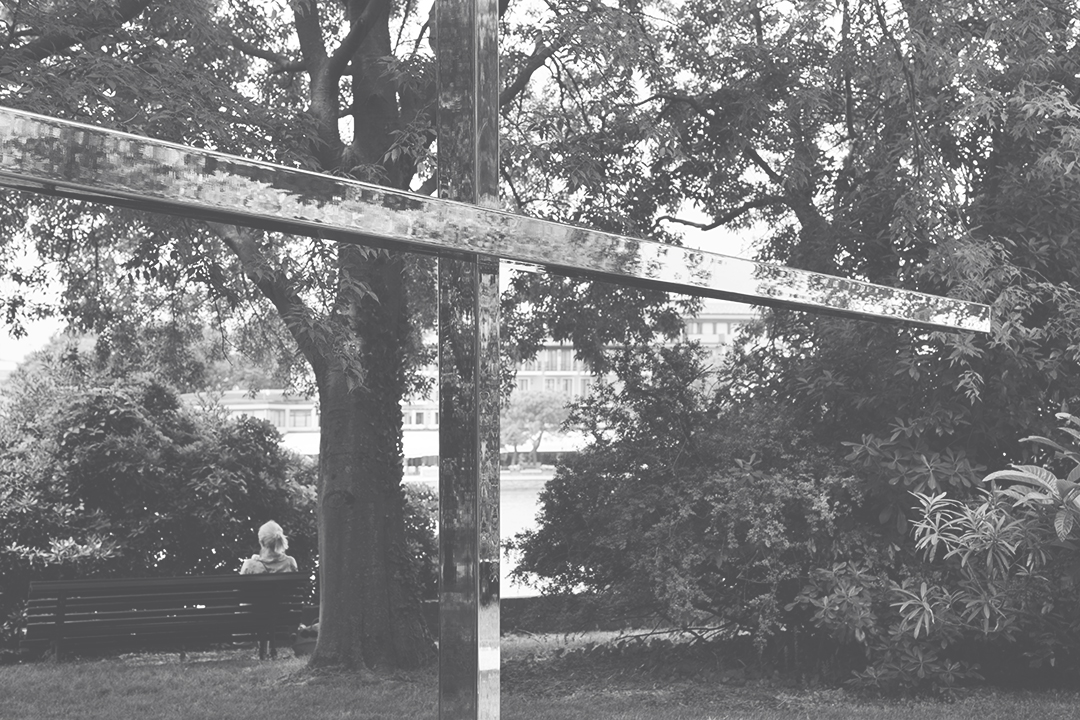
Carla Juaçaba (Brazil, 1976) studied architecture at the Universidade Santa Úrsula where she worked with the architect Gisela Magalhães and focused on exhibition architecture related to native Brazilian arts and historical museums. She developed her independent practice and research in Rio de Janeiro, establishing Carla Juaçaba Studio which focuses on the design of residencies based on a study of their context and environment, as well as other public and private projects. Juaçaba’s best known works include a chapel for the Pavilion of the Holy See for the 2018 Venice Biennale, the Casa Santa Teresa in Rio de Janeiro (2012), Casa Mínima (2008), Casa Varanda (2007) and Casa Rio Bonito (2005). She currently works in London on cultural programmes and private projects. In 2013, she won the first arcVision Women and Architecture Award and, in 2018, the AR Emerging Architecture Awards.
Visual Natures (maat, 30/03 – 05/09/2022) is the product of more than two years of critical investigations around climate science, creative practices and eco-politics. A continuation of the data-driven installation Earth Bits – Sensing the Planetary and the public programme Climate Emergency > Emergence, both conceived and ignited by Beatrice Leanza during her directorship of the museum, the project surveys political, social and cultural forms of collective agency from the 1950s onwards that demonstrate how our understanding of “nature” informs the ways in which we organise, sustain and govern our communities as an expanding planetary construct, in concept and in practice.
On maat ext., the series #groundworks introduce the critical explorations that feed into the complex interconnectivity between the environmental and energetic quests and its reverberation through decades of artistic creation and cultural dynamics, traced from the 1950s until today, and continues these investigations through collaborations with artists, curators, archivists, researchers and activists on their work and the meanings of ecology, environmentalism and societal responsibilities in the face of climate change.
Explorations is a programme framework (maat, 2020–2022) featuring a series of exhibitions, public and educational projects delving into the multi-faceted subject of environmental transformation from various scholarly and experimental vantage points – it brings philosophical and political perspectives forward, as well as sociocultural and technological investigations interwoven in speculative and critical practices in the arts and design at large. Central to this discursive and critical effort was the establishment of the maat Climate Collective in 2021, chaired by T. J. Demos, and geared toward assembling diverse cultural practitioners working at the intersection of experimental arts and political ecology.


